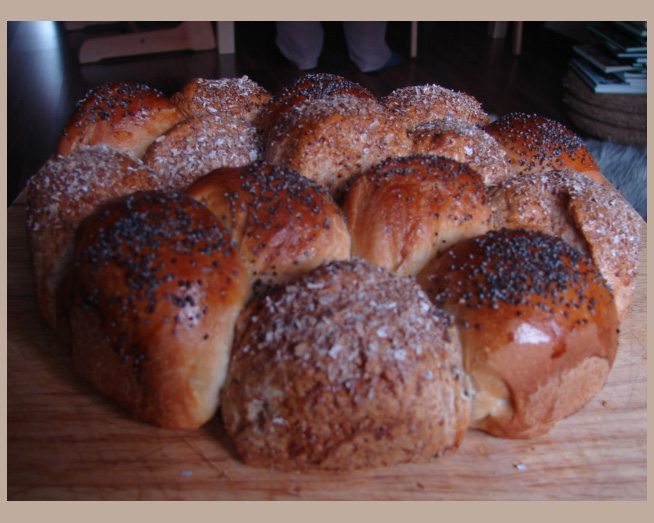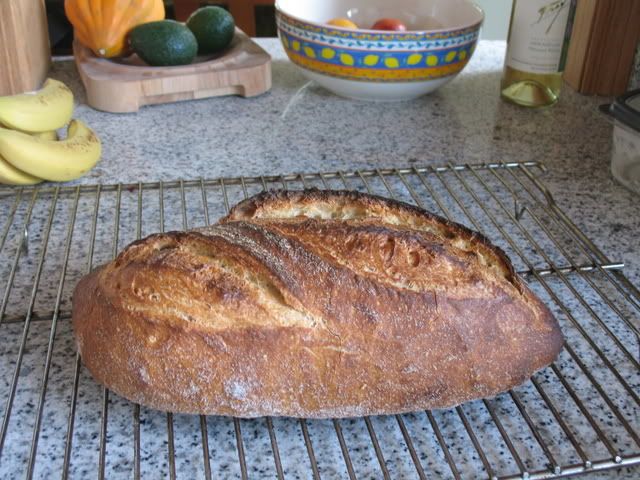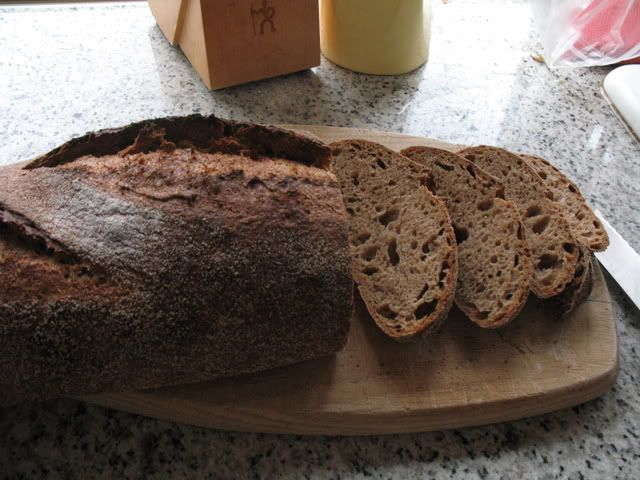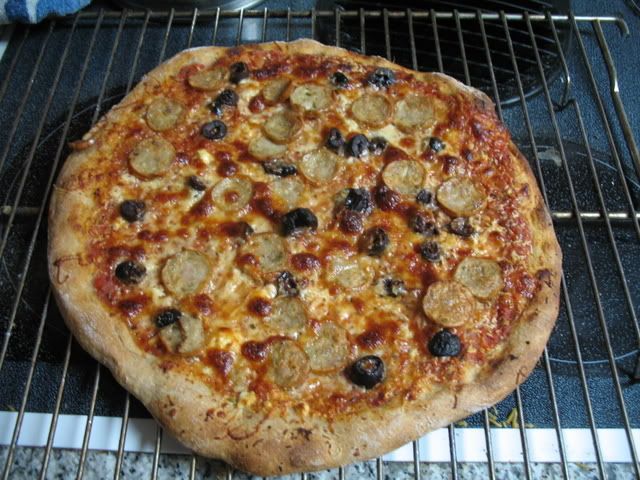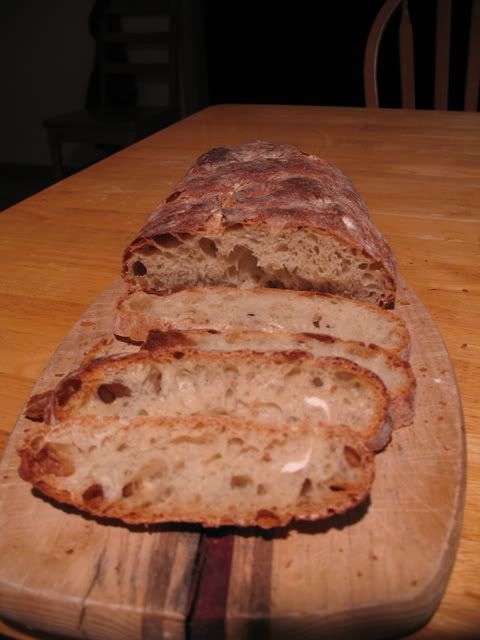Hello Folks, this is my first post on The Fresh Loaf, altough I have been reading and trying out recipes for a long time.
I wanted to share a very easy recipe for Sourdough Onion Rye, which is an adaption of pretty much everything I have learned from this site. It's really quite easy to make and comes out fine every time, so good luck and please give me feedback, I would love to hear about your experience.
The Starter
I use a fairly wet "batter" style sourdough starter. I keep it in the fridge and refresh it after I use it and then let it sit out for a while. Right now I am living in Zambia, this starter is therefore infested with Zambian yeast - I wonder if there is a difference? In any case, it's pretty active and works really well.
The Flour
I love reading the discussions about the various types and properties of flour, and how important a specific type of flour is for one recipe or another. In Zambia, we get two types of flour: Bread Flour and Cake Flour, that's it. I use Bread Flour and it works great. Rye flour is harder to come by, I get mine from a local bakery that imports it from South Africa. I have no idea exactly what kind of Rye it is, it looks sort of a like a medium extraction. I have learned not to worry too much, it all comes out tasting pretty good.
The Recipe
The night before baking, start the poolish.
about 1/2 cup starter
3 cups bread or all-purpose flour
1 cup Rye flour
2 cups of water.
Mix it all together, cover and let sit overnight.
The Next Morning.
Add to the poolish:
3 cups of flour as before
1 cup of Rye, as before
1 large (raw) Onion, finely chopped
(Optional) 1 Tablespoon Dried Dill
1 Tablespoon Salt
3/4 Cup water.
Mix well and let sit for twenty minutes.
This makes a pretty wet dough, one of you scientists can figure out the hydration. Because of the rye flour its quite sticky. I find the best way to mix it is to just get my hands in there and squish it all together.
After it sits, knead for 10 minutes. You will need to use quite a bit of flour as the dough is very sticky. After kneading cover and let rise until doubled, about two hours.

After rising, dump the dough onto a well floured surface and cut in half. Stretch each half **gently** into a ball, then **gently** stretch into a loaf shape. You don't want to squish the air bubbles. I find the "envelope" method of shaping just a bit too vigorous.
Transfer the the loaves onto baking paper, cover and let rise for about an hour.


Sourdough Onion Rye - Ready for the Oven
Meanwhile, preheat your stone and your oven to 450/220. Then transfer your loaf onto the stone, I use the back of a cookie sheet as a peel. When the loaf is in the oven use whatever steam method you prefer, I simply toss a cup of water into the bottom of the over and shut the door. Bake for about 25 minutes, turn the loaf once. I have a very small oven, so I can only bake one loaf at a time.
Take the bread out, and let it cool for as long as you can, and then enjoy! Also makes great toast!

Sourdough Onion Rye - The Finished Product
Your feedback greatly appreciated
Cheers!
